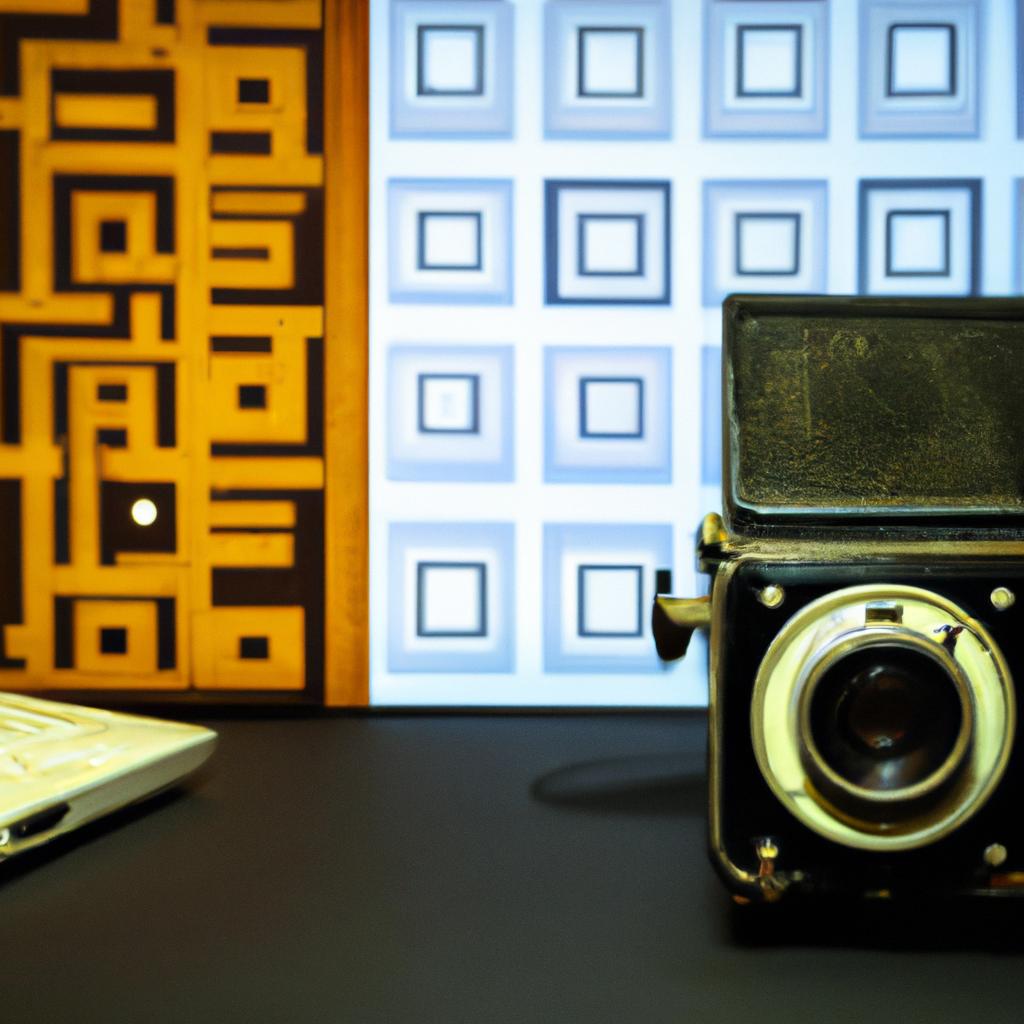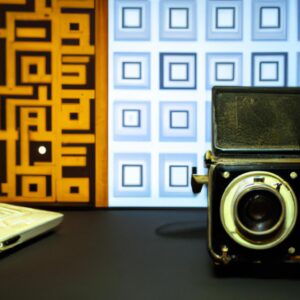Introduction: What is Digital Collage?
Digital collage is a fantastic way to bring together traditional and digital techniques. By blending photographs, illustrations, textures, and other elements, digital collage artists can create stunning pieces of art that are unique, thought-provoking, and memorable.
The beauty of digital collage lies in the ability to accurately mix digital and physical materials to create an artwork that contains traditional and digital elements. Traditional materials can include anything from paint and canvas to paper, fabric, and more. Digital elements include photographs, illustrations, and text.
Creating digital collages is a great way to let your imagination run wild, and many digital collage artists enjoy the freedom and the flexibility of creating something truly unique. It’s also a great way to explore the world of digital art, as it brings together some of the best aspects of digital and traditional techniques.
Preparing Photos and Materials
When creating a digital collage, the two main components are photos and materials. Photos give you a way to add visual elements to your project while materials such as paper, fabric, and string will provide texture and dimension. Both components should be carefully considered before starting.
In regards to photos, there are several considerations to keep in mind. You’ll want to make sure that the photos are edited to look their best and also carefully select the materials you’ll be using. Photos can be edited using any photo editing software such as Adobe Photoshop or GIMP. When editing photos, try to adjust the brightness, contrast, saturation, sharpening, and color balance for the best results. You may also want to crop the photos to your liking or apply filters to further enhance them.
Materials should also be carefully chosen. Common materials used for digital collages are paper, fabric, string, ribbons, sequins, buttons, feathers, and beads. Consider the overall color scheme when selecting materials and think about how these materials will add texture and dimension to your collage.
Choosing a Background
When it comes to creating a digital collage, an important factor to keep in mind is the background. It can be the difference between a good digital collage and a great one. The background should be eye-catching but subtle enough to not take away from the images that will be used to create the collage. Here are some tips to consider when selecting a background:
- Colors: Select colors that complement the main elements of your digital collage. A bright or dark background can contrast the images for a striking effect.
- Textures: Textures, such as marble or canvas, add depth and interest in the digital collage. You can use textures as either the background or as a subtle overlay on the collage elements.
- Flat vs. 3D: Whether you choose a flat or three dimensional background for your digital collage depends on the theme and look you are trying to achieve. Both are valid options for a background.
- Negative Space: Negative space is important in digital collage. It allows the elements of the collage to stand out and creates balance with your background choice.
By taking the time to carefully select a background that best suits your digital collage, you will be able to capture the attention of viewers and create an artwork that stands out.
Softwares to Use:
When it comes to creating digital collages, there are several software applications to choose from. Some of these applications are user friendly and ideal for beginners, while others are better suited to more experienced users. The best applications to use for a digital collage project depend on the complexity of the design, the desired outcome, and how much time is available to complete the project.
For those with limited experience, there are a range of free applications such as Pixlr and Canva that offer basic features and can be used to quickly create a basic digital collage. These apps are great options for beginners as they are easy to use and don’t require a lot of technical knowledge. For those looking to create more complex designs, there are a range of paid applications such as Adobe Photoshop and Affinity Designer which offer more advanced features and better results.
For those with more experience, there are also some very powerful paid applications such as Procreate and Clip Studio Paint, which have powerful tools and extensive features. These applications are ideal for creating more complex designs and incorporating traditional art techniques into the digital collage.
Placing Images and Text
When working with digital collage, the placement of images and text is an important step. It can make or break the overall look of the artwork. There are various techniques and strategies that can be used to make sure the composition looks appealing.
When layering images, it is important to think about the order of placement. Lightweight and transparent images generally look better when placed on the bottom layer, while objects such as shapes should be placed at the top. Additionally, be mindful of spacing between images. A nice, even amount of space will go a long way in making sure the final artwork looks neat and organized.
When it comes to selecting the placement of images, an important factor to consider is the use of balance. An easy way to make sure the artwork looks pleasing is to have two or more equal parts with similar images. This will help ensure the images don’t look too clustered and uneven.
Text can be added to digital collage projects in a variety of ways. For a classic look, try using fonts that mimic traditional lettering. Additionally, graphics can be used to create a more modern style. Be sure to select a font size that is readable, but not too large so that it takes away from the other components of the artwork.
Finally, be mindful of the negative space in the artwork. Negative space can add a sense of balance and can be a great background for text or shapes. Use the space strategically to add another layer of interest to the artwork.
Composition Tips
When making digital collages, it is important to consider the composition of your final artwork. The composition should be balanced, pleasing to the eye and display the chosen elements in the right way. One of the most popular methods of doing this is by using the “golden ratio” when designing the composition of a collage.
The golden ratio is an equation or pattern which is applied to work with natural proportion and can be used to create design aesthetics. It is based on the idea that certain ratios (1:1.618) are more aesthetically pleasing than others (for example 1:2). Applying the golden ration to a digital collage will help to make sure the overall composition is pleasing.
In addition to the golden ratio, there are other guidelines which can be followed to ensure the composition is aesthetically pleasing. These include, but are not limited to, balancing colours, having a focal point, using a grid to arrange elements, adding white space for negative space and working with symmetry.
If appropriate, other elements such as shapes, textures, patterns and text can be included in the composition. Adding these elements can help to bring the collage to life and add a unique edge to the artwork.
Careful consideration should be given to the composition of the digital collage during the project, and this should also be considered when the artwork is finished. Tweaks can be made to the composition until it is perfect.
Finishing To Create The Finished Artwork
When you have finally completed your digital collage artwork it’s time to export it so that you can do something with it. Exporting the artwork allows you to print a physical version of the work, or save it to share online.
To save and share your artwork, you need to export the file as a jpg, png, pdf, or other common file format. This will allow you to upload the work to popular art platforms on the internet. Some of these platforms even allow you to sell prints or digital copies of your artwork.
If you would like a physical version of your artwork, you can either use a reputable online printing service or take it to a local printer. Most print services offer multiple sizes and finishes for your artwork. It is important to be aware of the resolution and dpi of the artwork, to ensure that it won’t look pixelated when printed.
Sharing and selling your digital collage artwork is a great way to gain recognition and potentially make some money. You could also consider displaying the artwork in local art galleries or exhibitions. There are many opportunities to showcase your artwork both online and in person, so have fun exploring them!
Conclusion
The art of digital collage is an amazing blend of traditional and digital techniques that can create beautiful, unique works of art. In this guide, we explored the basics of digital collage, from preparing images and materials, to choosing a background, using software to layer images and text, composition tips, and finishing to create a final artwork.
If you are interested in learning more about the art of digital collage, there are many resources available online and in print. Local libraries often have books on digital collage, as well as other traditional art techniques. You can also find tutorials online, which will help you hone your skills and expand your knowledge. Finally, don’t forget to practice! As with any new skill, the more you work with digital collage, the better you will get.
comments: 0

